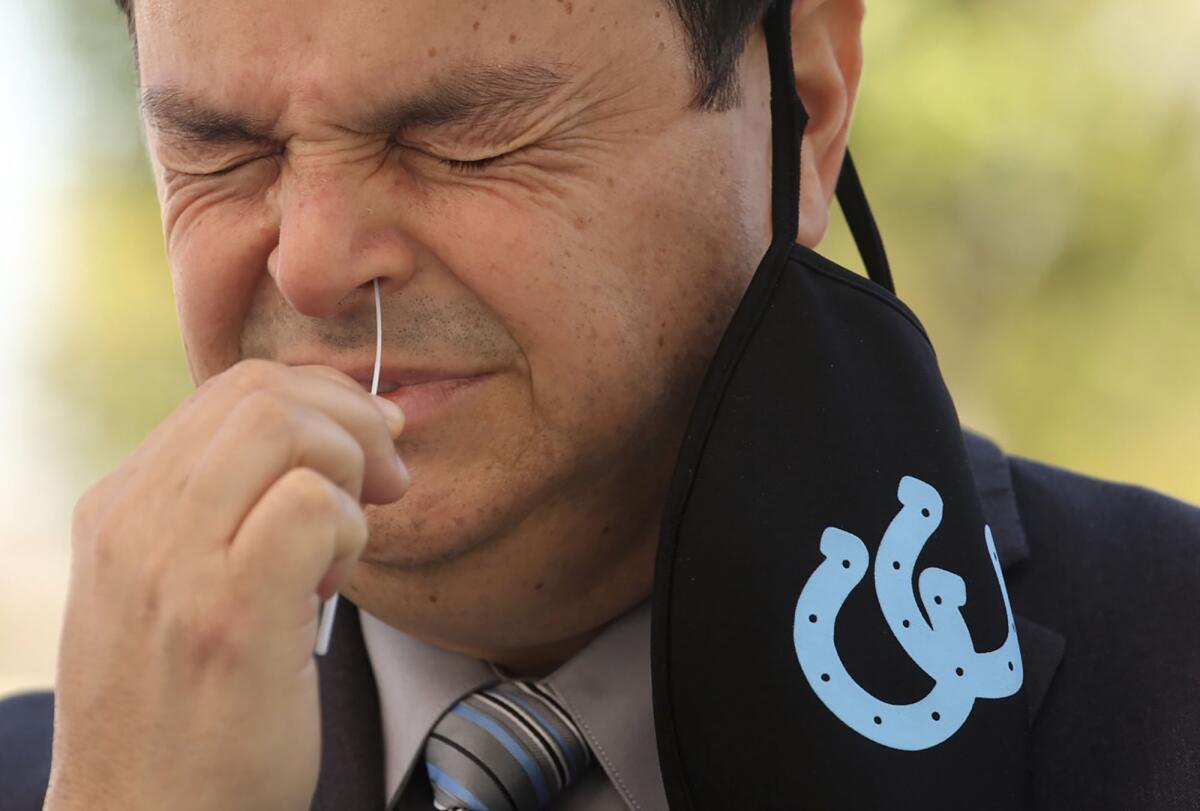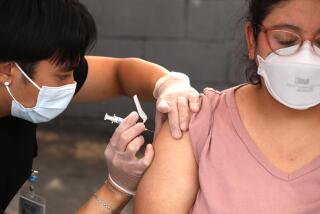Do I have coronavirus? CDC updates list of COVID-19 symptoms

- Share via
The Centers for Disease Control and Prevention made six additions to its official list of COVID-19 symptoms this week to help doctors and patients better understand who might be sickened by the novel coronavirus.
The newly added symptoms include chills, repeated shaking with chills, muscle pain, headache, sore throat and new loss of taste or smell.
They join the list of COVID-19 symptoms identified by the U.S. public health agency early in the outbreak: fever, cough, and shortness of breath or difficulty breathing.
If you have any of these symptoms — and especially if you have a few of them — it’s a good idea to call your healthcare provider, health experts said.
You can also use the CDC’s Self-Checker tool to help you decide when to seek medical care.
Dr. John Swartzberg, an infectious disease specialist at UC Berkeley’s School of Public Health, said it is not surprising that the CDC would update its list of symptoms as more information about the virus became available. “It’s what they should be doing,” he said.
“This is a brand-new disease and we are learning enormous amounts about it,” Swartzberg added, “including its clinical manifestations.”
The novel coronavirus keeping us stuck at home has been circulating in the human population for only four months.
As more people become infected, scientists gain a better understanding of how it spreads, how it makes us sick, and how best to treat it.
How can the new coronavirus affect people so differently — killing some while leaving others blissfully unaware that they have been infected at all?
As of Monday, it has infected more than 3 million people around the world and resulted in more than 210,000 deaths, according to trackers at Johns Hopkins University.
A spokesperson for the CDC said the newly added COVID-19 symptoms reflect changes in the case definition adopted by the Council of State and Territorial Epidemiologists (CSTE).
The CSTE is composed of epidemiologists who work in health departments across the country, and they make recommendations to the CDC about how to track and report diseases.
Swartzberg described them as the “eyes and ears of the CDC.”
“They are seeing these things that are reported by clinicians and then feeding that data to the CDC,” he said.
On April 5, the CSTE executive board approved a 10-page statement that laid out best practices for tracking and reporting cases of COVID-19. The statement lists symptoms that are most frequently identified with the disease.
The CSTE report notes that not everybody who is infected by the coronavirus has the same symptoms. Some people have no symptoms at all, while approximately 80% of those who do become sick with COVID-19 experience what doctors call “mild to moderate” symptoms — similar to having a flu, but not bad enough to require hospitalization.
Fifteen percent of cases are severe enough to require supplemental oxygen, and 5% are critical enough to require mechanical ventilation.
Israeli scientists say they can mimic the effects of a vaccination campaign if certain people willingly get infected with the coronavirus and recover.
The CSTE report said people with COVID-19 generally develop their first symptoms, including fever and mild respiratory problems, about five days after infection.
Swartzberg said those symptoms can last anywhere from seven to 14 days, but acute cases can last longer than that.
“It’s a bell-shaped curve, with some people getting sick for just a few days and others having symptoms that last longer than two weeks,” he said.
As health experts continue to learn more about the disease, it is likely that other symptoms will be added to the CDC’s list, said Janet Hamilton, executive director of CSTE.
“It is so new and it’s rapidly moving,” she said. “I couldn’t tell you when we plan to update it, but updating is our normal process when dealing with emerging infections.”









